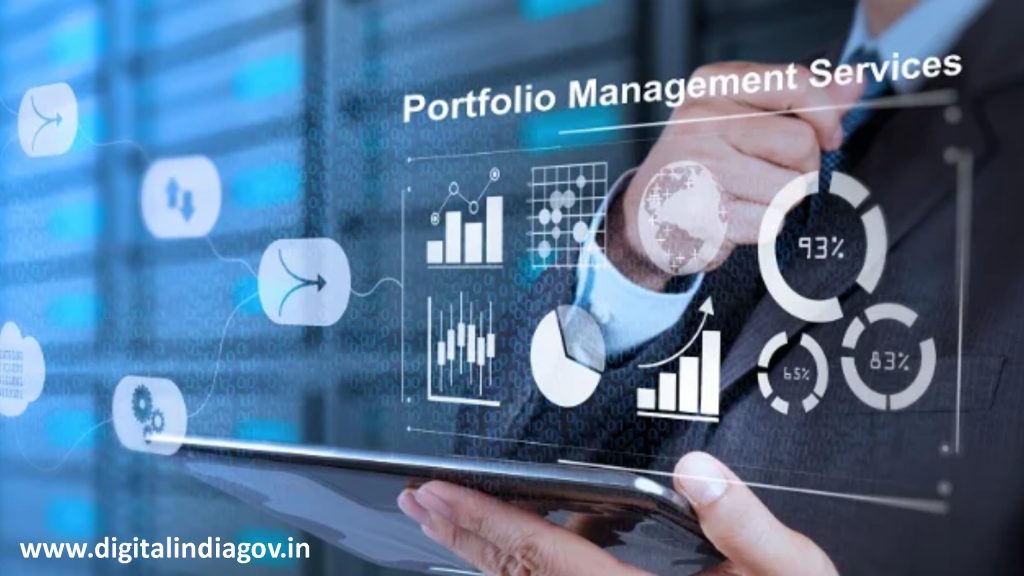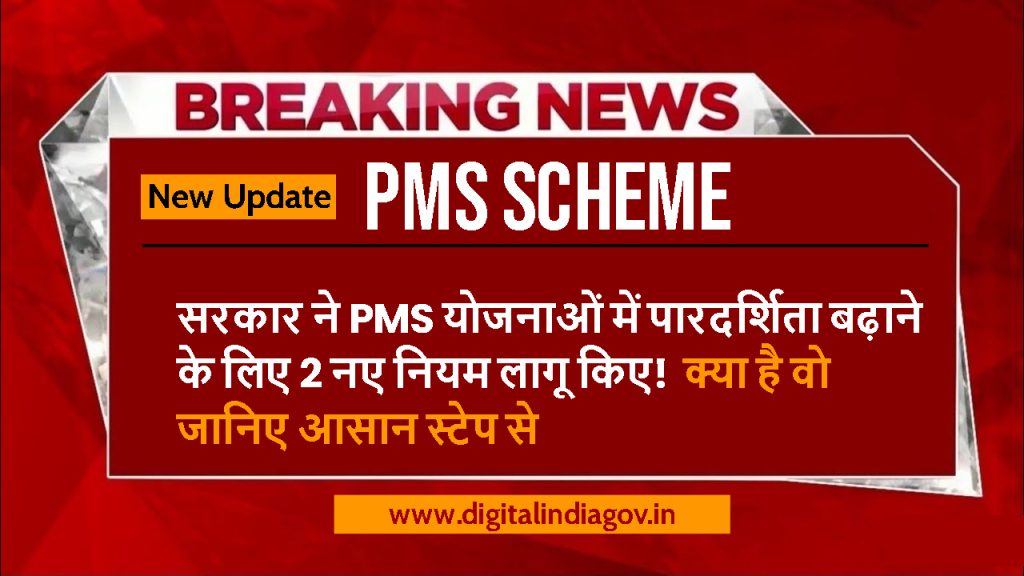PMS Scheme, Portfolio management services, or PMS for short, can be a viable option for high-net-worth individuals seeking to invest in a professionally tailored stock portfolio. We shall cover every aspect of PMS, or portfolio management services, in this article.
Contents
What is Portfolio Management Services (PMS)?
The PMS service caters to high-risk-taking HNI investors, and as of late, SEBI raised the minimum investment amount necessary to participate in the scheme to Rs. 50 lakhs. Many investors desire to own direct equity, even if it means incurring significant risks in order to achieve large profits. Many investors oversee their portfolios, but not all of them possess the requisite knowledge to oversee a stock portfolio. Beyond equities mutual funds, PMS can be a smart choice to consider for this type of investor.
Also Read: National Apprenticeship Promotion Scheme, shaladarpanportalgov.com, yojanaforall.com, Onlinereferjobs
There are 3 types of PMS
- Discretionary: A discretionary portfolio gives the service provider the authority to decide whether to purchase or sell the client’s shares. He is not required to speak with the client for advice.
- Non-discretionary: The customer makes the final decision, but the portfolio manager makes suggestions for investments that fit the investor’s risk tolerance. Stocks and other investment items can be chosen by the investor at his discretion. On the other hand, the portfolio manager executes trades.
- Advisory: The portfolio manager simply makes suggestions for investments under these services. The Investor alone is ultimately responsible for making the decision and carrying it out.
- Note: Most portfolio managers in India provide discretionary services. The majority of firms that manage portfolios offer services based on models. A standard model is used, with minor adjustments made based on the preferences of each unique client.

PMS is an individualized pool of funds
When you choose a PMS plan, all investments are made only in your name and a bank account, Demat account, and trading account are opened in your individual names. The shares will be maintained in a Demat account in your name, and any income or dividends from the investment will likewise be credited to your bank account.
It implies you hold all stocks individually, unlike mutual funds, where there is a pool of money managed by a fund manager and performance is measured based on per day NAV. While individual investor behaviour in PMS is segregated from other investors, the collective sentiments of all investors impact each fund’s success.
PMS agreement
If you want to use a PMS service, you will be required to sign a contract outlining all the services that will be rendered, as well as the models and methods the portfolio manager will use. By signing it, you grant the portfolio manager authority to manage your trade and bank account.
In order to receive PMS, you must reopen your bank account, trading account, and Demat account. in order for a portfolio manager to authorise power of attorney (PA). The portfolio manager will therefore reroute any dividends, interest income, or other funds that are credited to the bank account associated with PMS into your portfolio. A portfolio manager is mandated by market regulator Sebi to provide performance reports to their clients on a biannual basis. To view the portfolio statements, most portfolio managers provide a username and password that may be used to log on to their website.
Also Read: PLI Scheme India, Mobilenumbertrackeronline, indnewsupdates.com, ssorajasthanidlogin.com
The fee structure in PMS
The maintenance cost of PMS is higher than that of any other investment alternative. It has an entrance load, yearly management expense as well as profit share. They do differ, though, amongst providers.
- 1. Entry Load: You pay an entry fee, also known as the Set Up Cost or Entry Load, when you choose to use a portfolio management service. It could be anywhere from 1 to 3%. It is subtracted from the total amount you invest.
- As such, the minimum payment required to utilise this service is Rs. 50 lakh. To begin investing in PMS, you must set aside Rs. 50 Lakh plus 2 or 3% of setup charges.
- 2. Management Fees: These are the costs associated with having your portfolio managed. It could range from 1% to 3%, based on the service provider.

- 3. Profit-sharing costs: This price is predicated on any profit-sharing arrangements that a PMS may have, in addition to other fixed costs, between the client and the provider. There are many who base their fee on the hurdle rate.
- A guaranteed rate of return is known as the hurdle rate. In the event that a portfolio contributes more than that percentage, the PMS business will own 10% of the total. In other words, if your portfolio has produced returns higher than anticipated, you will have to split the profit.
- Apart from the expenses indicated above, the PMS additionally charges the investors on the following counts as all the investments are done in the name of the investor:
- Custodian Fee
- Demat Account opening charges
- Audit charges
- Transaction brokerage
However, the rates of the service providers are flexible, so you can utilise them as much as you can. The PMS cost does not have a set standard.
Advantages of PMS
- A professionally managed and watched-over stock and debt portfolio.
- PMS guarantees to surpass the benchmark, meaning that it will yield higher long-term returns than the benchmark.
- You can invest in mutual funds, equities, debt, and gold, among other asset classes.
- There is no cap on the amount of money you can invest in a particular stock.
- A specialist does not follow the herd; instead, they consider your needs and make investments in the desired section.
- A focused and diversified portfolio based on the investor’s characteristics.
Disadvantages of PMS
- In accordance with SEBI guidelines Because of the minimum investment requirement of Rs. 25 lakhs (which will increase to Rs. 50 lakhs on January 1, 2020), small investors would not be able to make use of the services provided under PMS.
- Profits are shared by PMS suppliers; losses are not.
- There is a lengthy paperwork process involved in opening a new bank account, trading account, and Demat account for PMS.
- High setup costs: at the time of investment, you must pay one or two per cent of your AUM or the amount you choose to invest. You also have to pay the annual administration costs in addition to this.
How PMS are taxed in India?
It has long been controversial to tax PMS revenues as either capital gains or business income. However, following a recent court decision, it has been evident that profits from PMS would be handled as regular capital gains, subject to equity tax laws. This means that without indexation benefits, any long-term capital gains (beyond the 1 lac limit per financial year) will be taxed at 10% and any short-term capital gains (before 1 year) at 15%.

Also Read: PM Scholarship Scheme, digitizeindiagovin.com, Typingspeedtestonline, Nebsit Council
Conclusion
To sum up, the PMS Scheme is a great chance for investors looking for individualised and expert portfolio management. Individuals may confidently manage the intricacies of the financial market and improve their investing performance by utilising specialised tactics and expert insights. When weighing your investing alternatives, the PMS Scheme is a particularly appealing option for individuals who want to maximise their capacity to accumulate money.
Faq’s
Q. The PMS Scheme: What Is It?
Ans: Fund managers oversee a portfolio of assets on behalf of investors under the PMS (Portfolio Management Services) Scheme, a professional investment service, based on the investors’ individual financial objectives and risk tolerance.
Q. Who can invest in a PMS Scheme?
Ans: High net-worth individuals (HNIs) and institutional investors are often eligible to participate in PMS schemes because to the typical minimum investment size.
Q. What advantages come with making an investment in a PMS scheme?
Ans: Benefits include tailored investment plans, professional management by skilled fund managers, transparency in portfolio performance, and the potential for higher returns compared to traditional investment approaches.
Q. How are PMS costs structured?
Ans: PMS fees can differ, but they usually consist of performance fees, which are a proportion of the profits made, and management fees, which are a percentage of the assets under management. Examining the fee structure is crucial prior to making an investment.
Q. Do PMS investments have a lock-in period?
Ans: Although some PMS investments could have particular terms, most don’t have a set lock-in time. Investors ought to review the PMS’s terms and conditions.
@PAY
